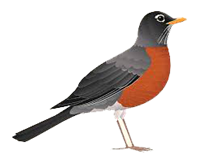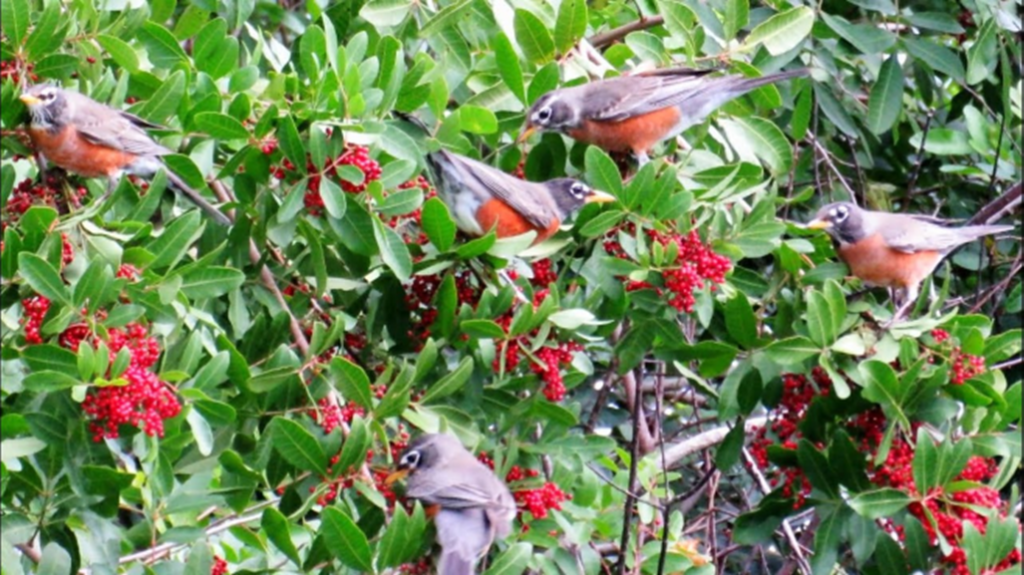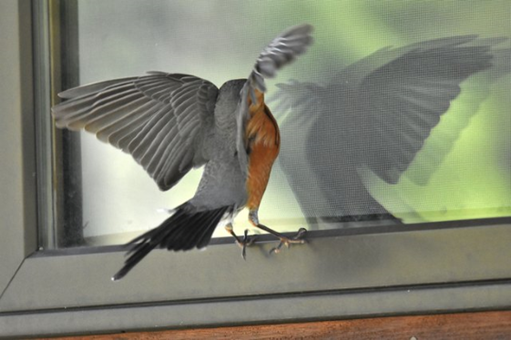LINK TO PDF NEWSLETTER DOWNLOAD

If you have ever seen a Robin laying its eggs, one thing might have left you puzzled. Why do red Robins lay blue eggs? The reason is due to “biliverdin”, a pigment deposited on the eggshell when the female lays the eggs. There is some evidence that higher biliverdin levels indicate a healthier female and brighter blue eggs. Eggs laid by a healthier female seemed to encourage males to take more interest in the young.
Robins use unwary ants and millipedes as a kind of insecticide. Seized in the bird’s bill, the hapless invertebrate unleashes its defensive chemical weapons. The Robin then rubs these compounds all over its feathers to get rid of parasites like mites and ticks.
Forklore is always interesting, and one of those myths shows its bravery and how it got its red breast. During the crucifixion of Jesus Christ, the Robin observed a thorn in Christ’s eyebrow. Robin felt the misery of Jesus and took a flight towards him. It pulled the thorn out of Jesus Christ’s brow and his blood fell upon its breast. It is also believed that the courageous bird was wounded during this act.
Now, urbanization, and its associated light and noise pollution are affecting these birds. Bright lights are making city Robins sing their morning songs much before the crack of dawn, and their songs are becoming more high-pitched to overcome the din of traffic.
As with many birds, the wintering range of American robins is affected by weather and natural food supply, but as long as food is available, these birds are able to do well for themselves by staying up north. One reason why they seem to disappear every winter is that their behaviour changes. In winter Robins form nomadic flocks, which can consist of hundreds to thousands of birds. Usually these flocks appear where there are plentiful fruits on trees and shrubs, such as crabapples, hawthorns, holly, and juniper. When spring rolls around, these flocks split up. Suddenly we start seeing American robins yanking worms out of our yards again, and it’s easy to assume they’ve “returned” from migration. But what we’re seeing is the switch from being non-territorial in the winter time to aggressively defending a territory in advance of courting and raising chicks. This behavioural switch is quite common in birds.
Why Are Birds Attacking My Windows?
Each year, as the warm weather rolls around, migratory birds like American robins stake out their territories in our neighbourhoods. These nesting sites will be where they find mates and make babies, which means that location and security are of vital importance. A good mate-to-be will guard its territory against any unfamiliar bird face—even when that face is their own.
When a Robin notices its reflection in a window or mirror within its territory, it gets agitated, raises the feathers on its head, and assumes a dominant posture. Normally that is enough to make other Robins leave immediately. But, the Robin in the reflection, appears to be in a dominant posture, agitated, and unwilling to leave.
Often, the Robin just leaves rather than pursue the reflection. A male may simply go to his favourite song perch and start singing. When he doesn’t hear a responding song, he’s more certain that his territory is safe. A female often goes back to her daily activities and stays alert for other females.
However, some Robins become increasingly agitated—and then so do their reflections! In a vicious cycle, the Robin repeatedly flies in to chase away the perceived rival and hits the glass. Still the reflected Robin remains, and the territorial bird becomes more and more determined to drive away the upstart.
During the nesting season, a Robin’s territorial urge is more powerful than the urge to eat or sleep. By defending a territory a Robin ensures there will be enough food for its young.
To you—even if your irritated, inside your home—your windows appear transparent. But to belligerent birds in bright daylight, you may as well have tiled the exterior with mirrors. A Robin looking at your house sees another Robin looking back at him. And then, of course, they fight (Turkey attacks clean, shiny cars for the same reason.) No bird attacks a dirty car.
Window attacks are different from bird strikes, the violent collisions that occur when a bird thinks your house is the sky and flies straight into it. Strikes are dangerous and often deadly for the birds involved. Territorial attacks are mostly just annoying for everyone, including the bird.
If you tend to find your home beset by angry birds, the only way to prevent this behavior is to make sure the Robin does not see its reflection. The simplest way, if it’s a small window or mirror, is to tape some paper or cardboard over the outside of the window. Usually the paper needs to be up for three to four days until the Robin gets busy with nesting duties and babies and forgets about its window rival. If it’s a big patio window, it’s harder to cover the whole thing. One technique that sometimes works is to paper over the area where the Robin has been actually hitting. Press ‘n seal wrap is a quick and easy way to prevent Robins from seeing their reflections. It’s simple to adhere to the surface of windows or mirrors and simple to remove, too.
Unfortunately, covering one window may simply push your problem a few feet away. American robins in particular have been known to attack as many as 15 windows in a single house. A territorial bird can be very persistent and the best course of action is to be patient and wait for the breeding season to end.





